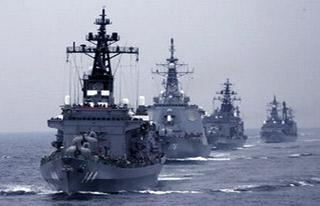
A file photo.
BANGALORE (BNS): India is installing along its long coastline a sophisticated surveillance system capable of tracking movements as distant as 20 kms in the sea with a command and control centre in Delhi from where the entire coast can be monitored, officials said here.
Civil works to put in place the system, comprising a radar, electro-optic sensor and command and control software are underway.
With the system, "we can monitor any square inch of the entire sea of the country and see visually," said I V Sarma, Director (R&D) of Bangalore-headquartered BEL, a defence electronics company, which developed the system for the Coast Guard.
In the first phase, these surveillance stations would come up in 46 sensitive coastal locations by next year-end.
The idea is to start the deployment with the west coast, sources at Bharat Electronics Limited (BEL) said.
"Trials (for testing the system) are over and a formal contract will be signed with the government before December end," Sarma, adding "we will start putting equipment from January onwards".
Though contract negotiations have not been completed, BEL expects the first phase order to be worth Rs 500 crore to Rs 600 crore.
"We hope to install and commission the system (first phase in 46 locations) in the next 10 months to one year (from January next year)," he said.
While surveillance stations are being put up in sensitive areas in the first phase, the subsequent second and third phase to be taken up would address the 'gaps' to ensure that the entire coastal region is covered.
Sarma said cameras in the coastal surveillance system operate during day and night as well in low-light conditions.
BEL has been working on this project for about a year.
"The set-up cameras are used for a range of 20 km. Both radars and camera are capable of going up to a distance of 20 kms into the sea," he said.
Remote operating stations and remote regional operating centres are being set up at local and regional levels in different parts of the country, besides a command and control centre in Delhi.
"You can see a complete a coastline picture. You can select any zone and see what's happening," Sarma said.
Data fusion from signals from the radar and electro-optic sensor would help identify a target, cameras can be activated and zoomed into it to take visuals of targets 20 kms in sea and "see exactly what's happening in the ship or boat or anything.
"So that's the type of power we give to a person sitting in Delhi. We can monitor any square inch of the entire sea of the country and see visually," he added.
 Previous Article
Previous Article Next Article
Next Article












The Indian Air Force, in its flight trials evaluation report submitted before the Defence Ministry l..
view articleAn insight into the Medium Multi-Role Combat Aircraft competition...
view articleSky enthusiasts can now spot the International Space Station (ISS) commanded by Indian-American astr..
view article